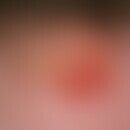Synonym(s)
DefinitionThis section has been translated automatically.
The diseases listed below(Nephronophthise Syndromes) are associated with mutations in the NPHP gene complex:
- Joubert syndrome 4 (OMIM 609583)
- Nephronophthisis 1, juvenile (OMIM 256100)
- Senior-Loken Syndrome-1 (OMIM 266900)
General informationThis section has been translated automatically.
Saunier et al (1997) found that the NPHP1 gene located on chromosome 2q13 contains at least 20 exons extending over more than 80 kb and is located entirely in the non-duplicated region common to all NPHP1 deletions. Mollet et al (2005) showed that NPHP1 interacted with nephrocystin-4 (NPHP4) and that NPHP1 and NPHP4 belong to a multifunctional complex that affects actin and microtubule structures and is involved in signal transduction of cell-cell and cell-matrix adhesions and in cell division. Furthermore, this gene complex seems to play an essential role in the organization of epithelial cells.
Konrad et al (1996) observed that the mutation in the NPH1 gene is responsible for the vast majority (about 85%) of the purely renal forms of juvenile nephronophthisis, i.e. for cases without extrarenal involvement (e.g. eye lesions).
Betz et al (2000) reported 2 patients with nephronophthisis-1 associated with congenital motor apraxia of the Cogan type. Caridi et al (1998) showed the association of nephronophthisis with retinitis pigmentosa (senior-oken syndrome) in patients with homozygous deletion in the NPHP1 gene.
Joubert syndrome is an autosomal recessive multisystemic disease characterized by cerebellar hypoplasia, mental retardation, hypotension and respiratory disorders. Furthermore, motor ocular disorders can be detected. Some persons with Joubert syndrome have retinal dystrophy and/or nephronophthisis. The disorder in such patients is called Cerebello-oculo-renal syndrome (CORS).
LiteratureThis section has been translated automatically.
- Ala-Mello S et al (1998) Molecular studies in Finnish patients with familial juvenile nephronophthisis exclude a founder effect and support a common mutation causing mechanism. J Med Genet 35: 279-283
- Betz R et al (2000) Children with ocular motor apraxia type Cogan carry deletions in the gene (NPHP1) for juvenile nephronophthisis. J Pediat 136: 828-831
- Caridi, G., Murer, L., Bellantuono, R., Sorino, P., Caringella, D. A., Gusmano, R., Ghiggeri, G. M. Renal-retinal syndromes: association of retinal anomalies and recessive nephronophthisis in patients with homozygous deletion of the NPH1 locus. At J Kidney Dis. 32: 1059-1062
- Hildebrandt F et al (1997) A novel gene encoding to SH3 domain protein is mutated in nephronophthisis type 1 Nature Genet 17: 149-153
- Konrad M et al (1996) Large homozygous deletions of the 2q13 region are a major cause of juvenile nephronophthisis. Hum Molec Geneet 5: 367-371
- Mollet G et al (2005) Characterization of the nephrocystin/nephrocystin-4 complex and subcellular localization of nephrocystin-4 to primary cilia and centrosomes. Hum Molec gene 14: 645-656
- Parisi MA et al (2006) AHI1 mutations cause both retinal dystrophy and renal cystic disease in Joubert syndrome. J Med Genet 43: 334-339
- Saunier S et al (2000) Characterization of the NPHP1 locus: mutational mechanism involved in deletions in familial juvenile nephronophthisis. At J Hum Genet 66: 778-789



